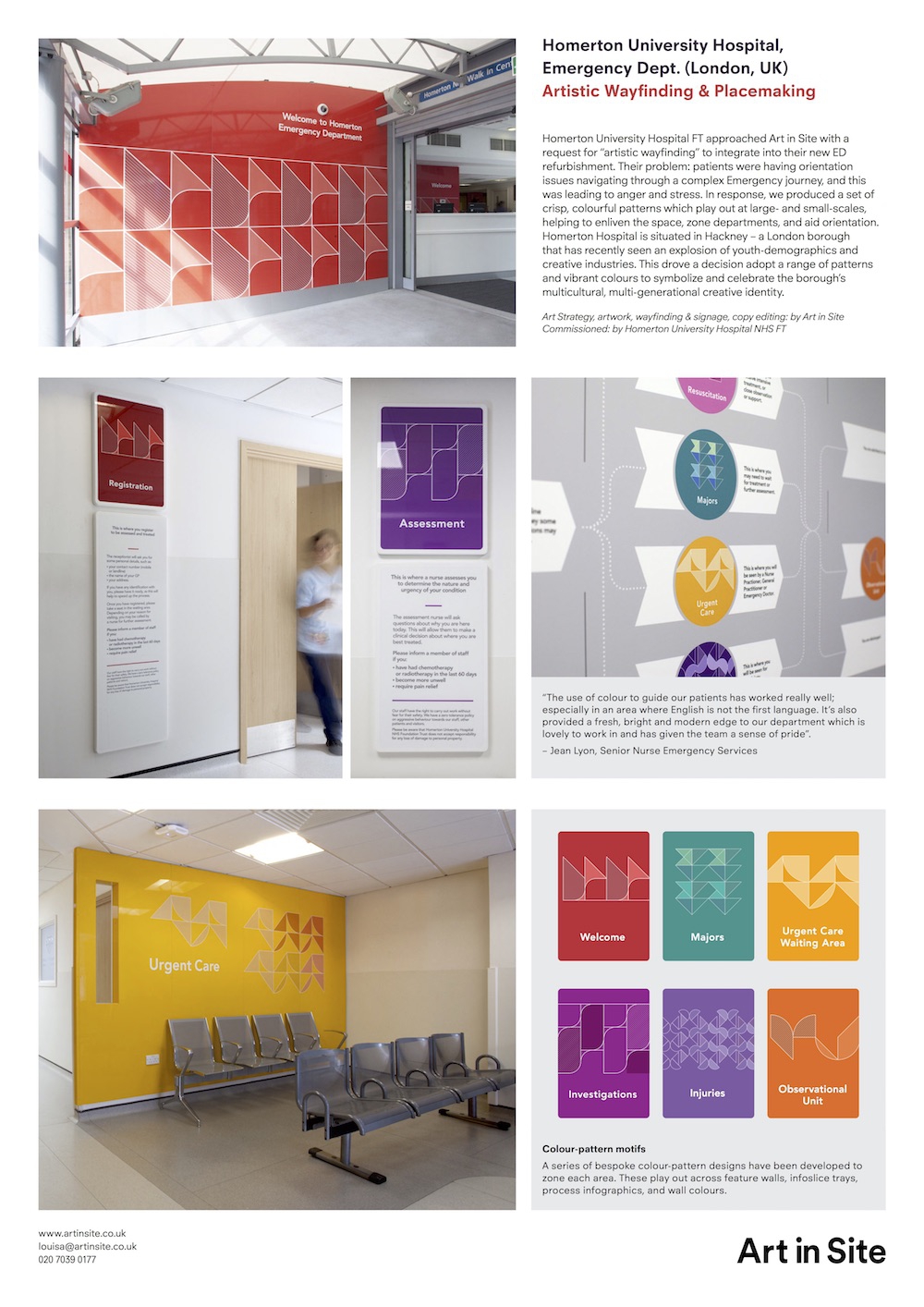Women & children's / Arts and health
European Healthcare Design 2019
How to please everybody: making art for toddlers and teens across multiple conditions at Evelina London Children’s Hospital
By Louisa Williams, Martin Jones, Peter Shenai and Jason Busby | 12 Jun 2019 | 0
This poster focuses on the Evelina 1+ refurbishment project, which asked: how do you make artwork that addresses widely differing and occasionally conflicting needs?
Abstract
The Evelina 1+ refurbishment project covered nine wards and the whole gamut of paediatric medicine, from neurology to daycare, from birth to 18. We had a problem: how do you make artwork that addresses such widely differing and occasionally conflicting needs?
Methodology and results: We developed an engagement process (encompassing 30-plus clinicians and play specialists; and 25 young people) that led to a suite of integrated artworks to meet the emotional and clinical needs of children in hospital. Consultation with clinicians, contractors, estates professionals and architects led to an “art strategy matrix”, identifying a range of needs, with proposed artistic solutions to each.
Rather than use the artworks as decoration, we chose to apply an artist's sensibility to a set of design inventions, and to think of those inventions as specific tools for the specific needs agreed by the steering group. Prototype designs were taken to patient representatives and stakeholders in a series of playful, structured workshops, in order to adapt, rework, and co- develop designs.
An artist was commissioned, whose work is abstract and visual, punning and observational, and as much loved in editorial illustration as children’s books. Finished artworks using different aspects of his sensibility are fine-tuned to address particular needs where they arise in different contexts:
Across all wards: For children receiving uncomfortable treatment, bespoke animated ceiling tiles (an innovation) offer a range of distractions that develop at the click of a button. Children and clinicians can control the animation advancing a simple story – eg, “watch us zoom in from space”, or engaging in maths and matching “count how many spots the ladybirds have". If children would rather look at something gently calming they can choose soothing movements, like twinkling stars.
Daycare stay: In daycare, patients need a stimulating, enlivening environment that distracts from anxieties and distress. Verbal and visual puns entice children and families to explore the ward. We thought of the whole ward as a book or a website, creating large-scale environmental graphics extending the full length of the ward. Using marquetry techniques, cut shapes of animals and abstract forms are playfully integrated into the ward materials palette.
Longer-term stay: Our user group of patients said night lights were comforting. Our floor-to-ceiling height Corian glowing ‘day and night lights’ change the entire mood of the space. They are a friendly welcome; a gently changing comforting presence viewed across the ward; a beacon to encourage children from bed after an operation; and a diurnal orientation, helping to restore sleep patterns disturbed by clinical lighting.
The artist aesthetic of these design inventions is extended into wayfinding, play furniture and clinical communications.
Conclusions and implications: Handled correctly, immersive arts engagement empowers youth patient groups, giving them a low-risk way to influence their environment. Integrated art can directly address multiple clinical and emotional needs at low cost. This provides a new framework for assessing art’s contribution in value engineering studies.
Organisations involved



